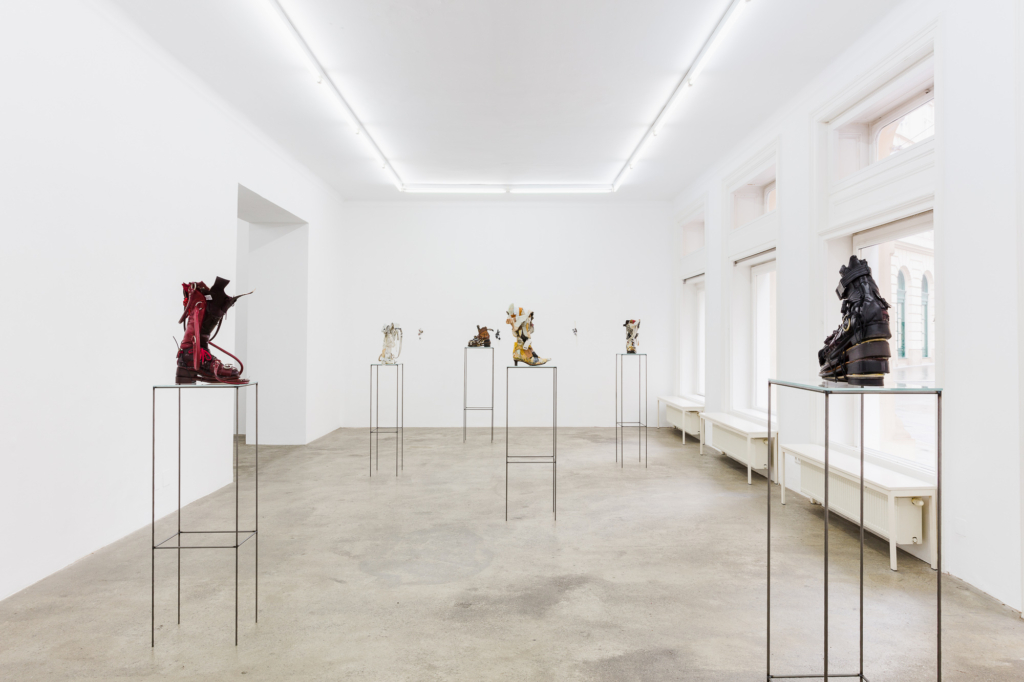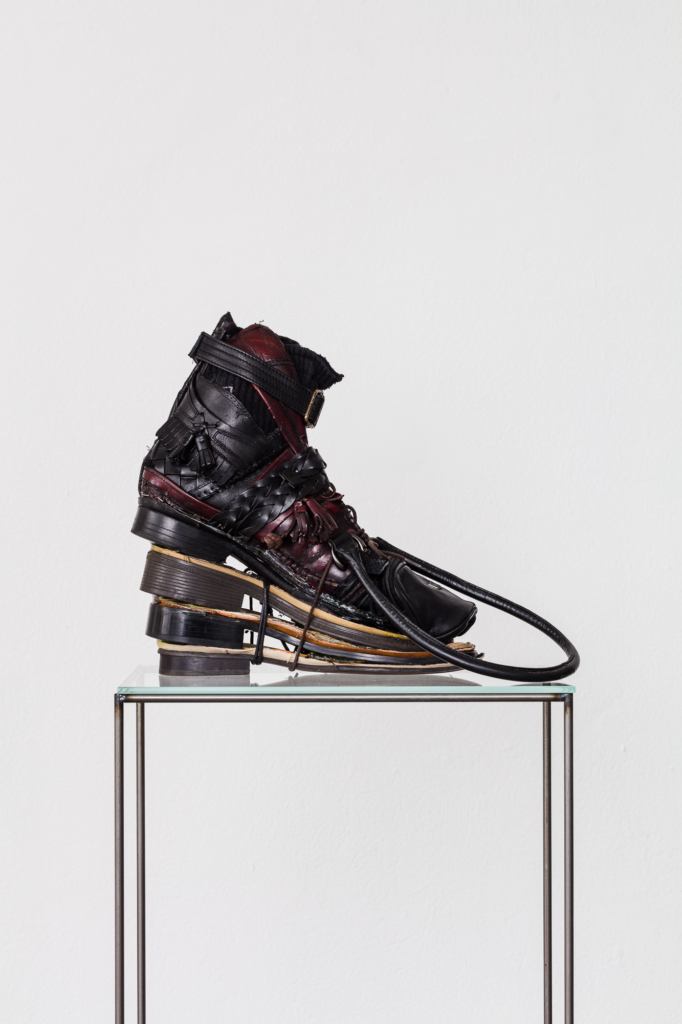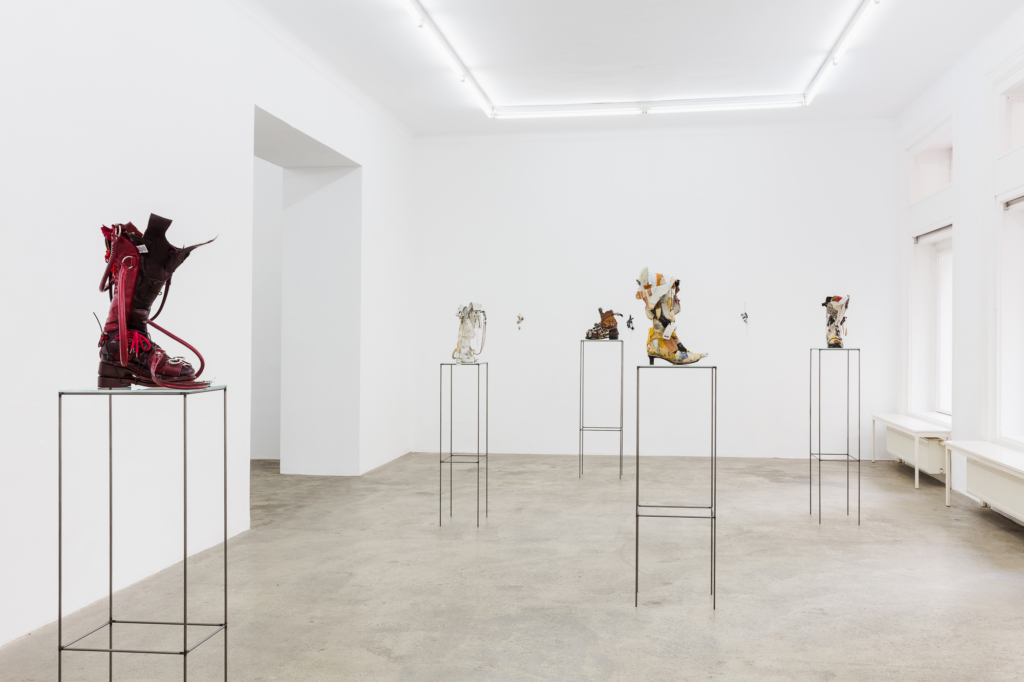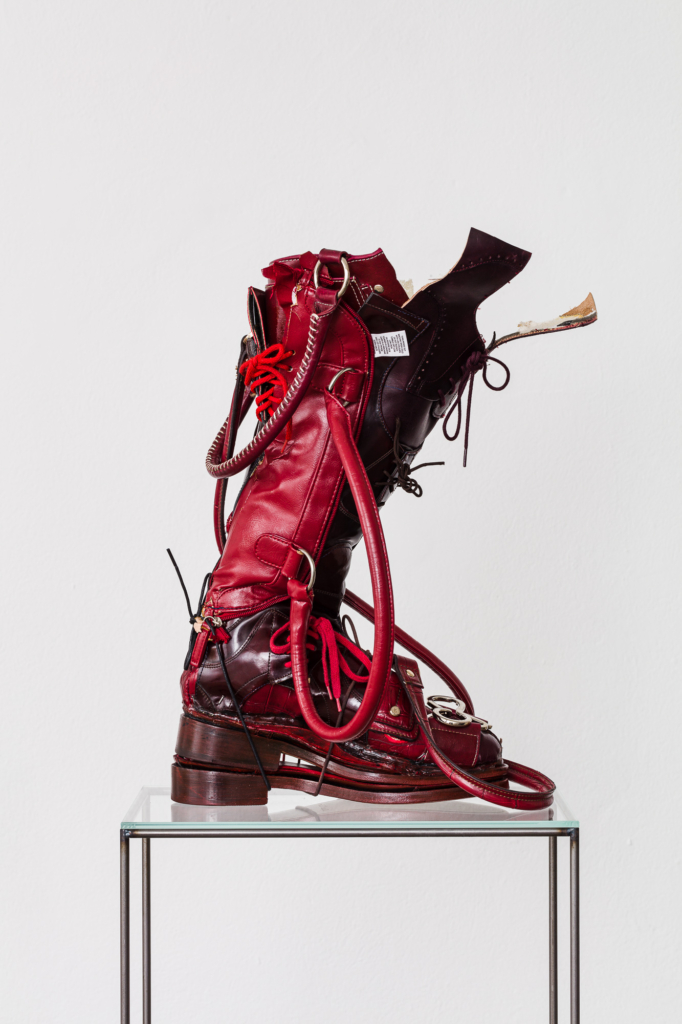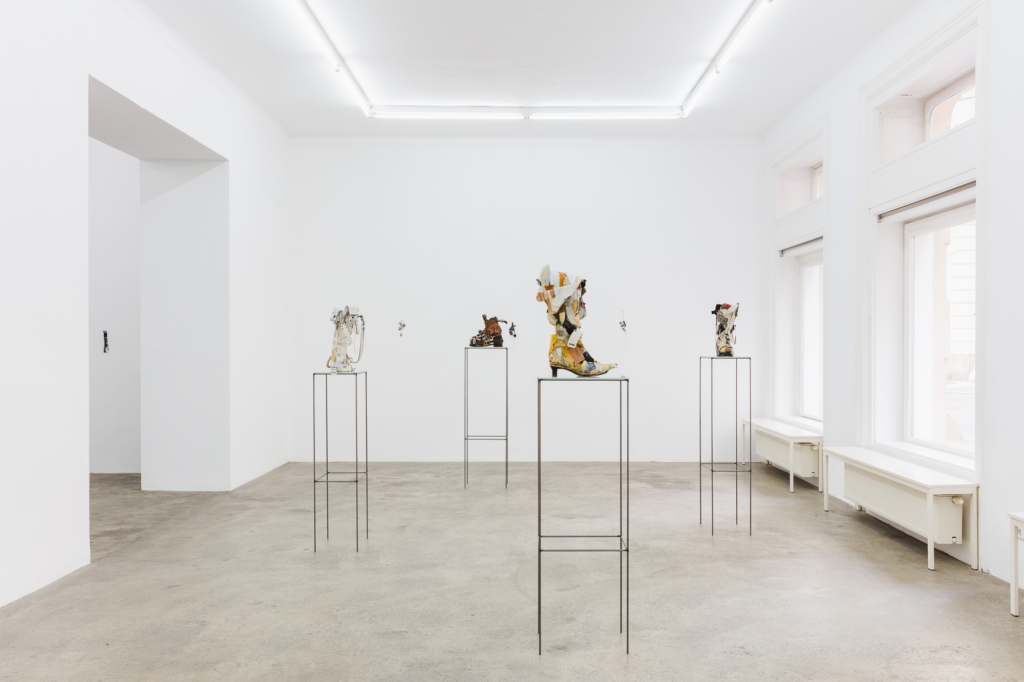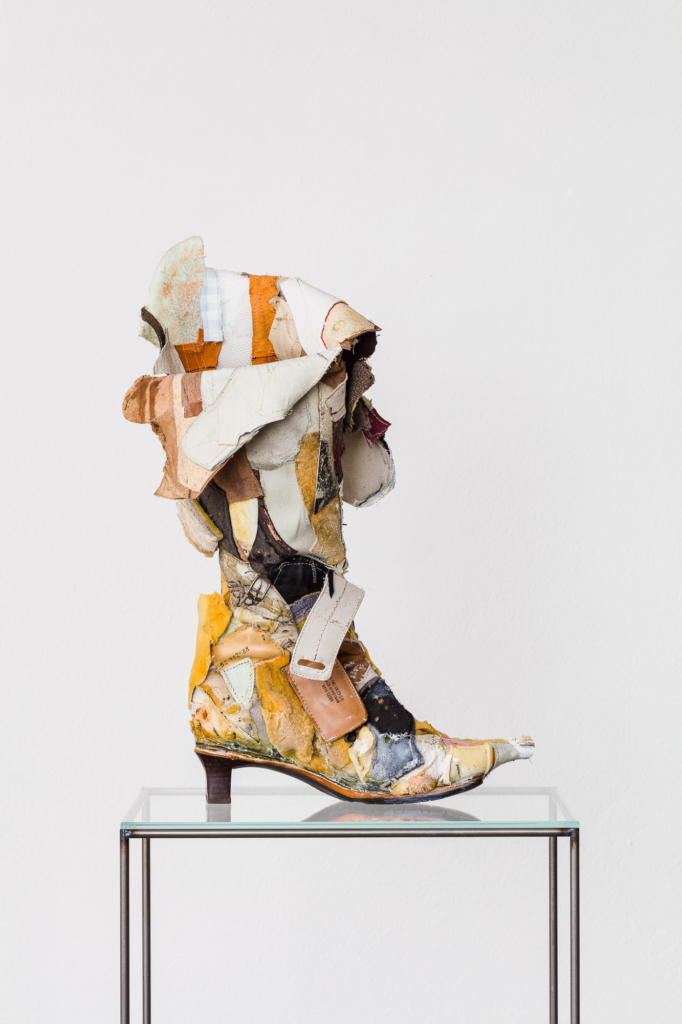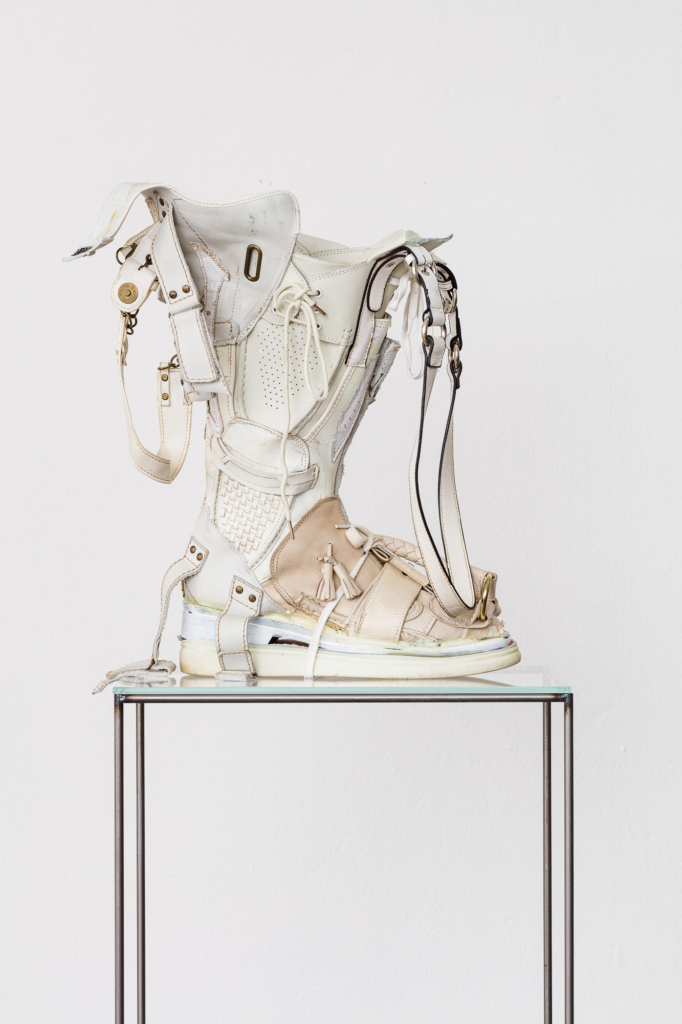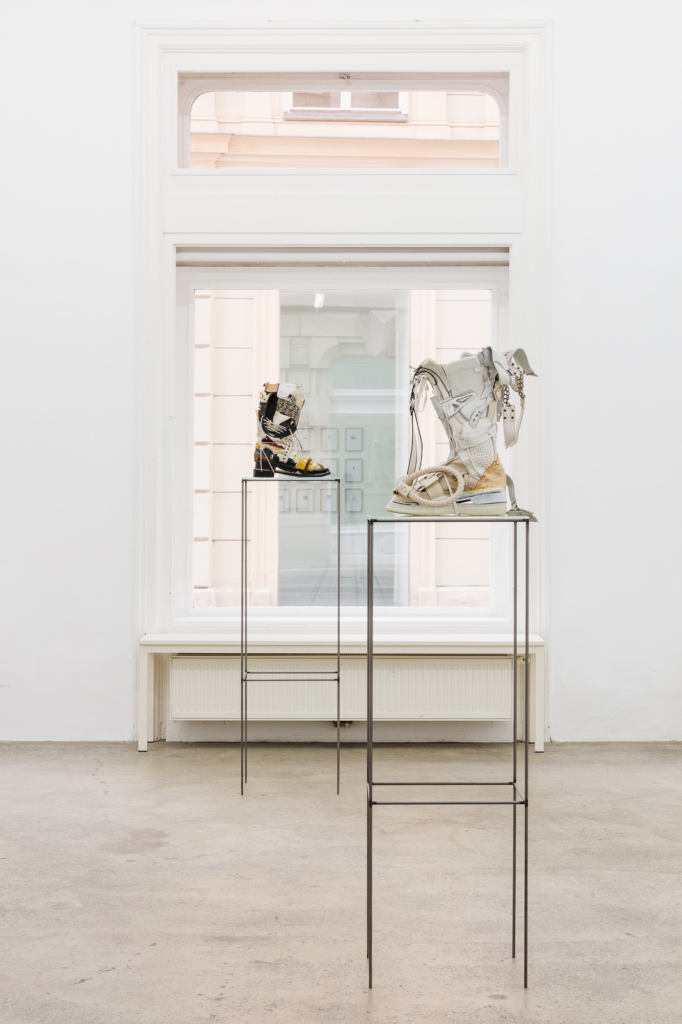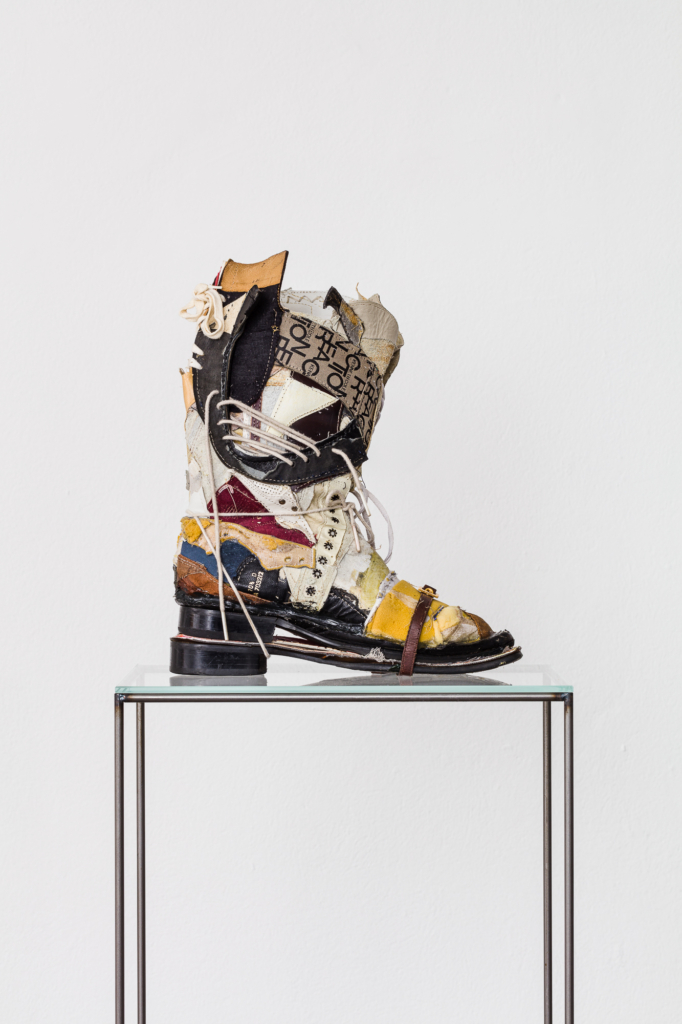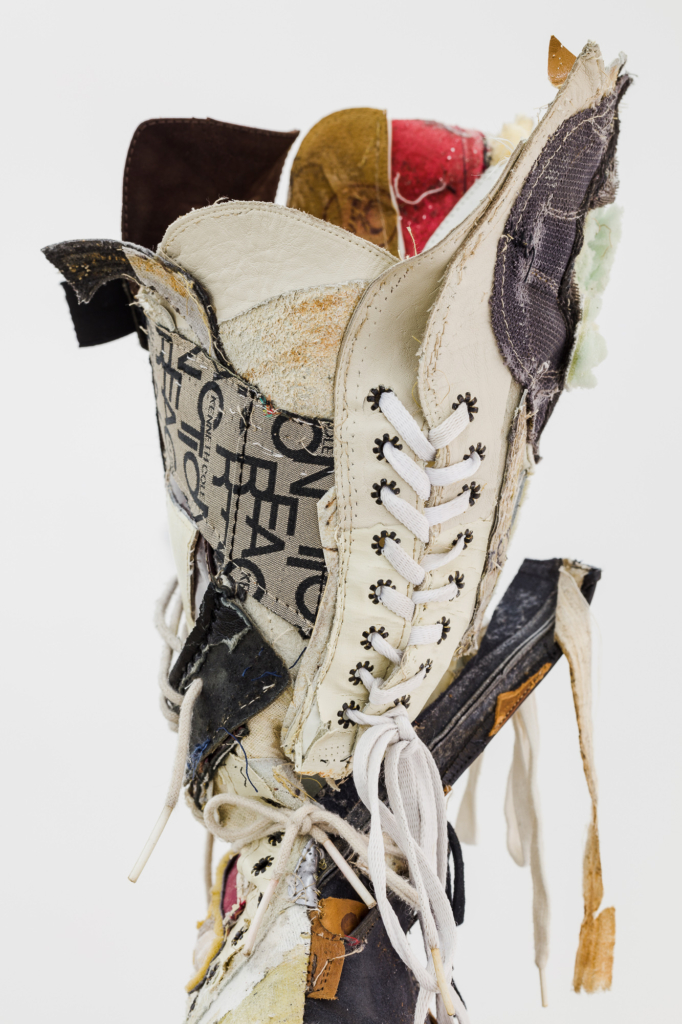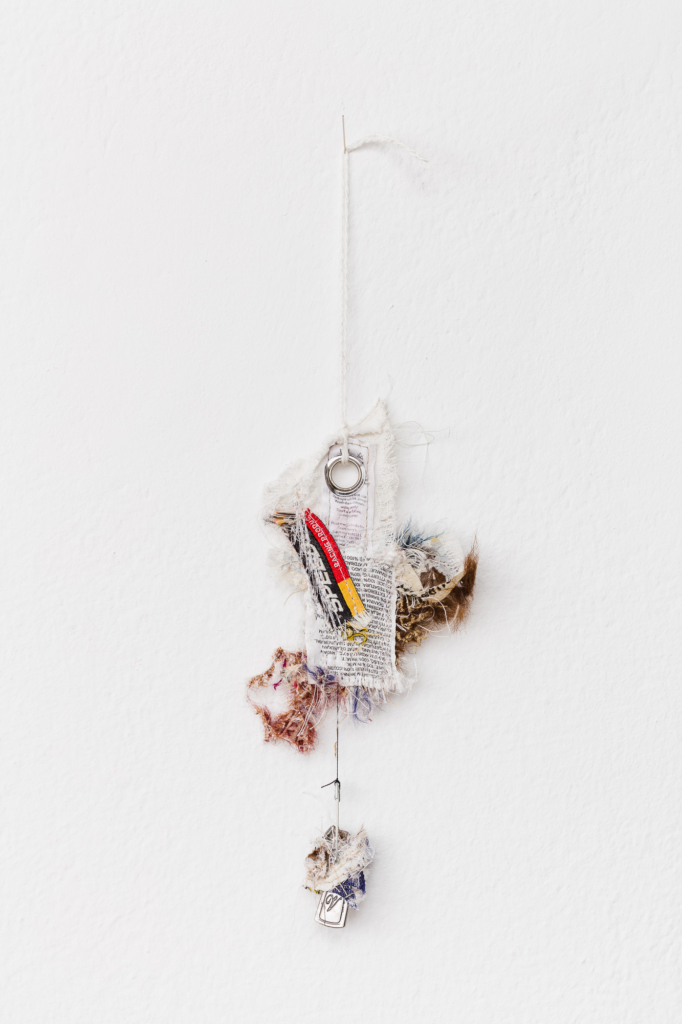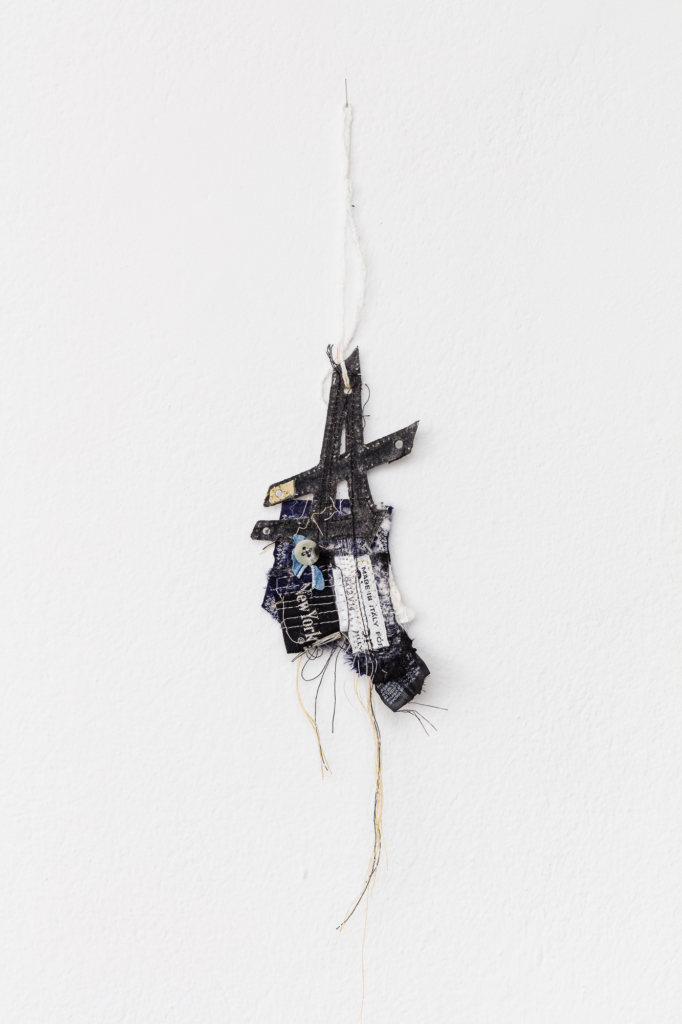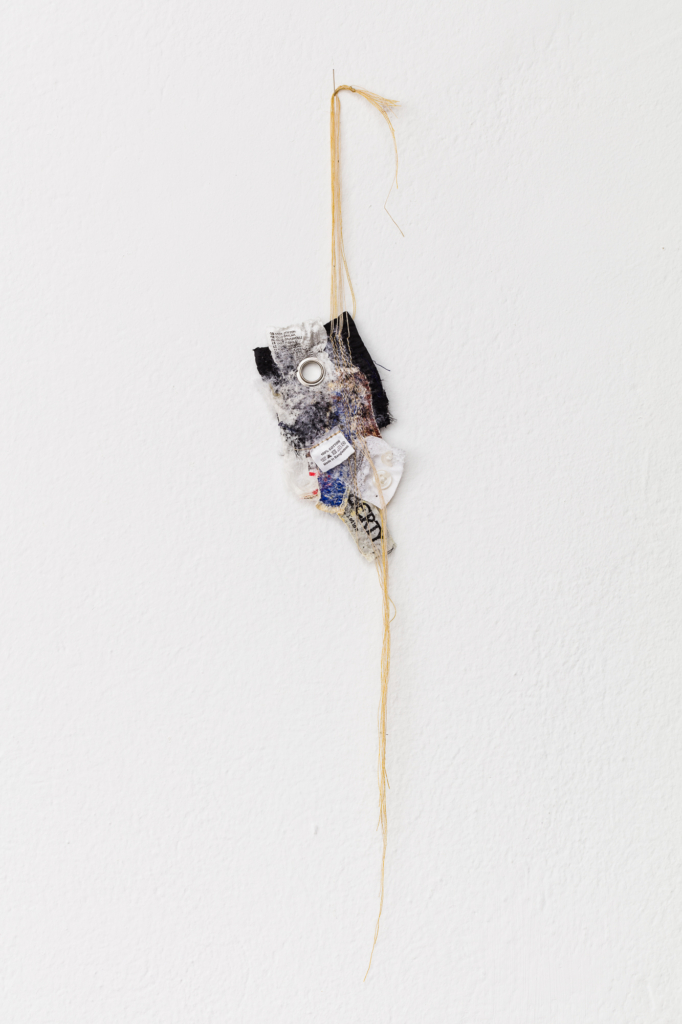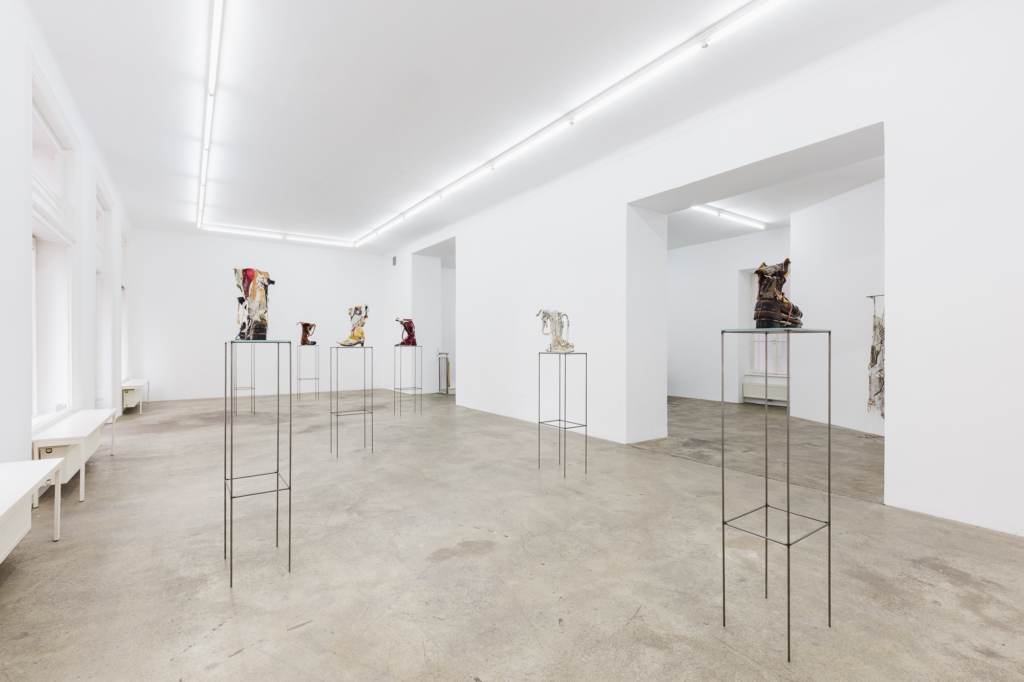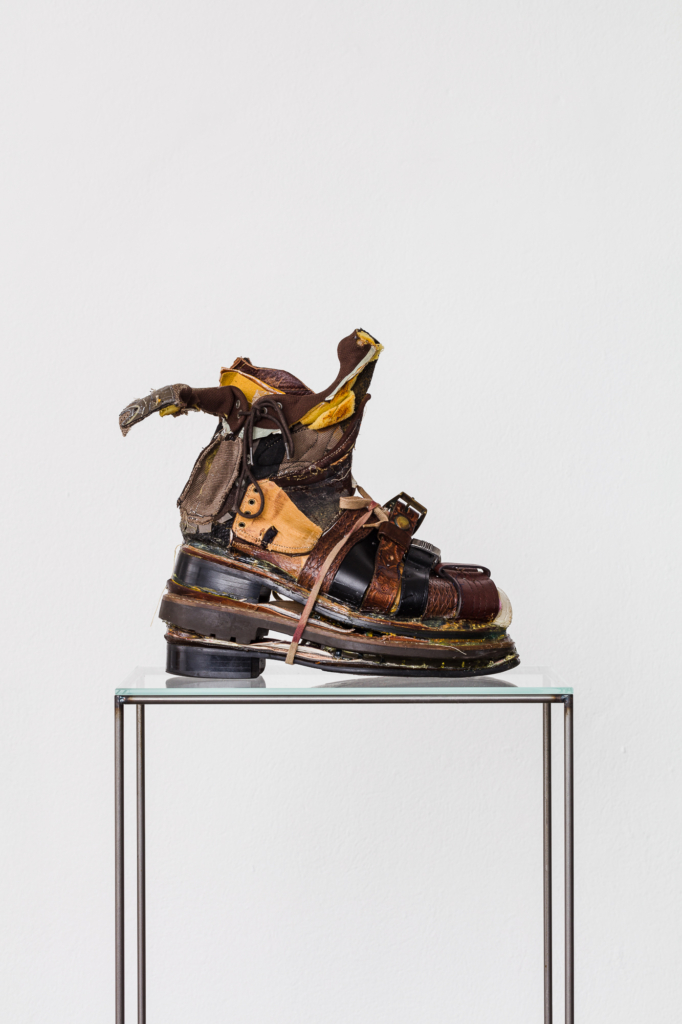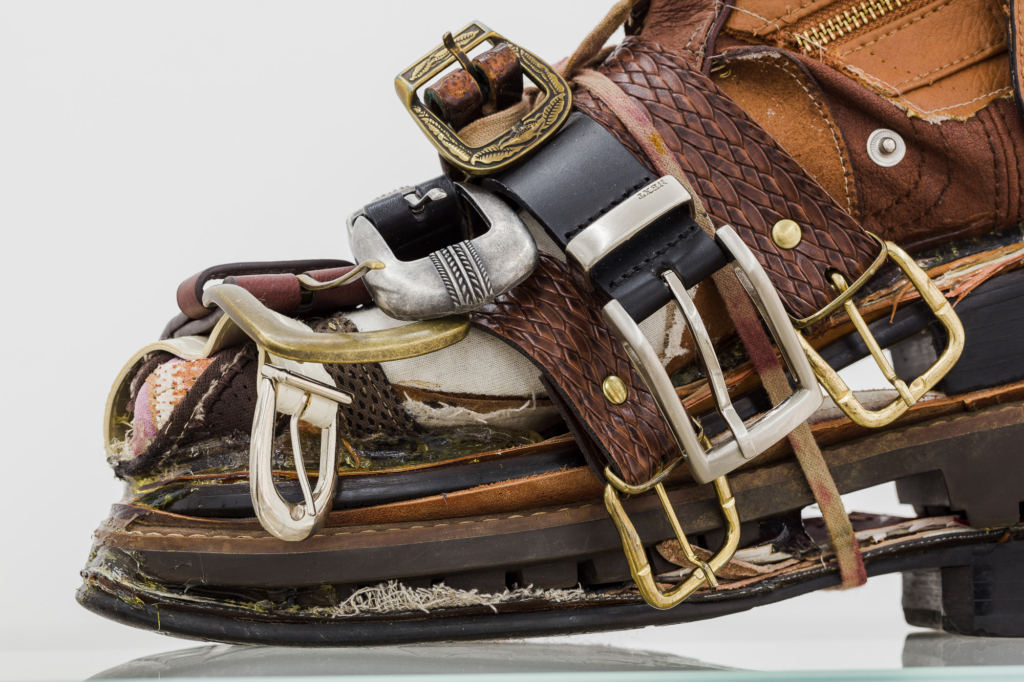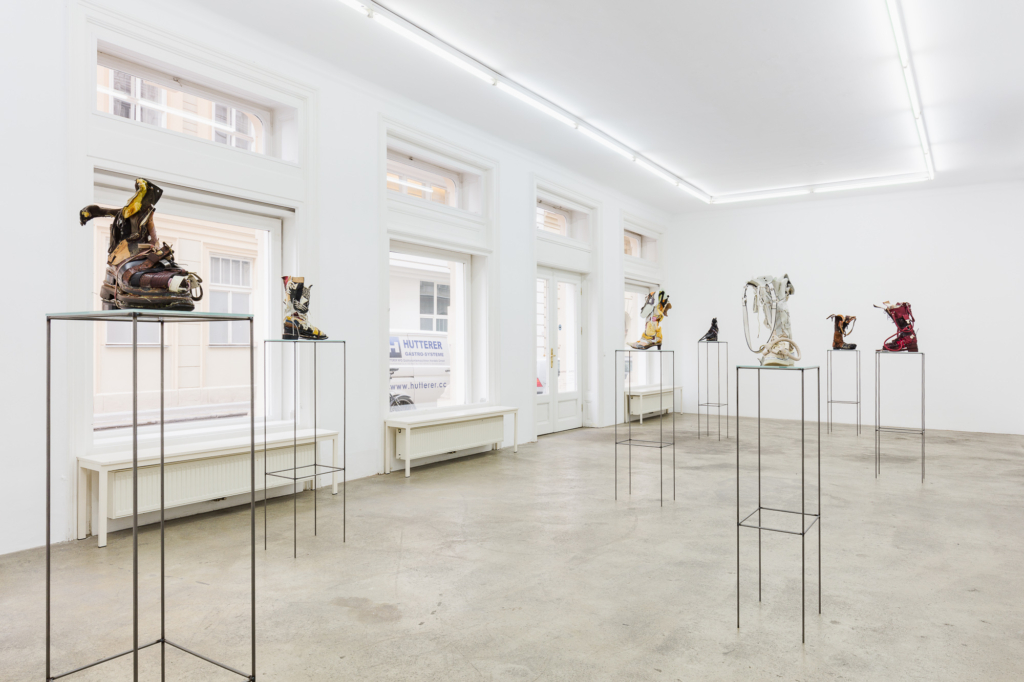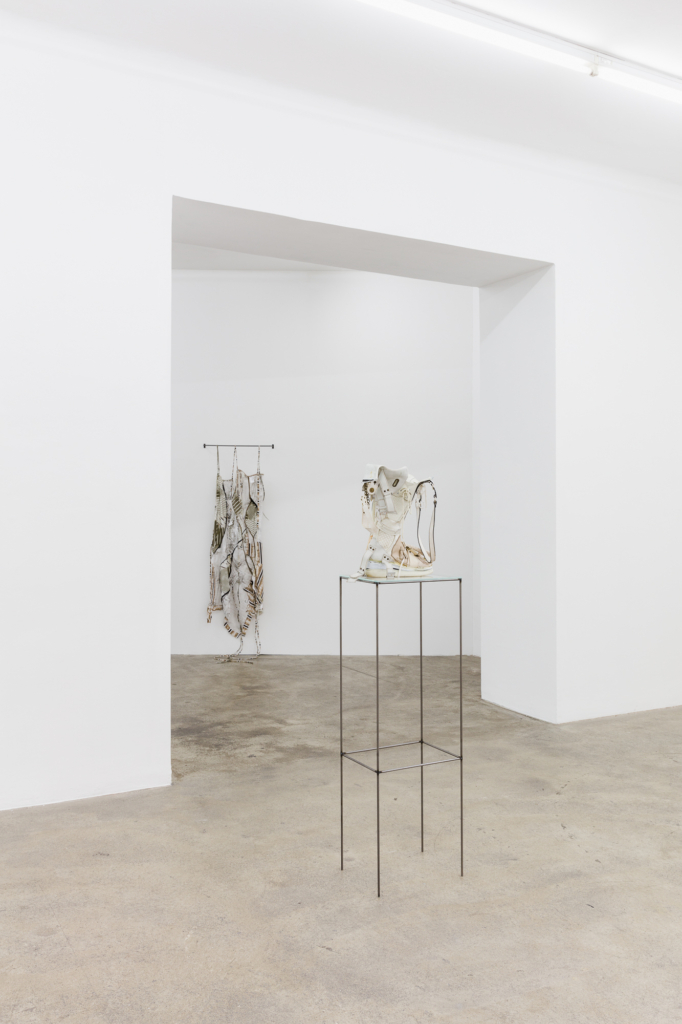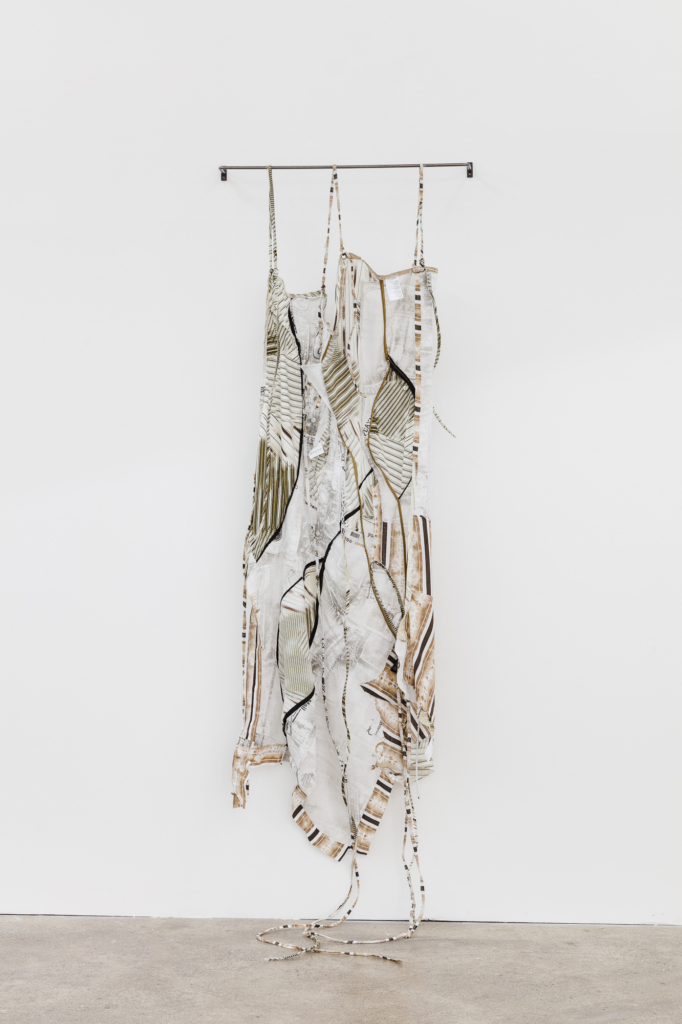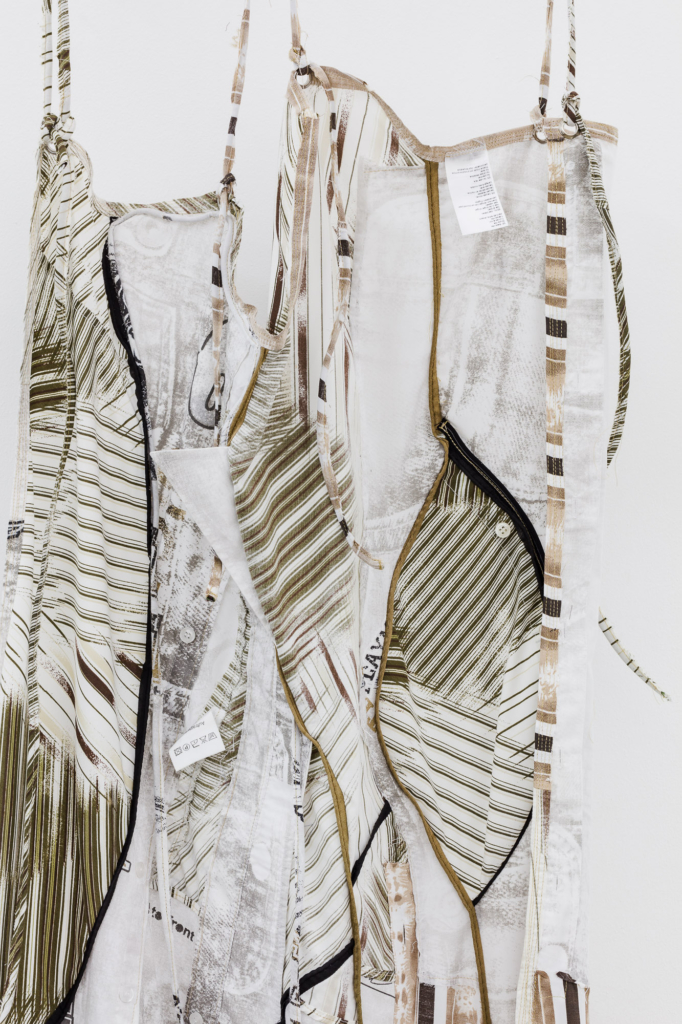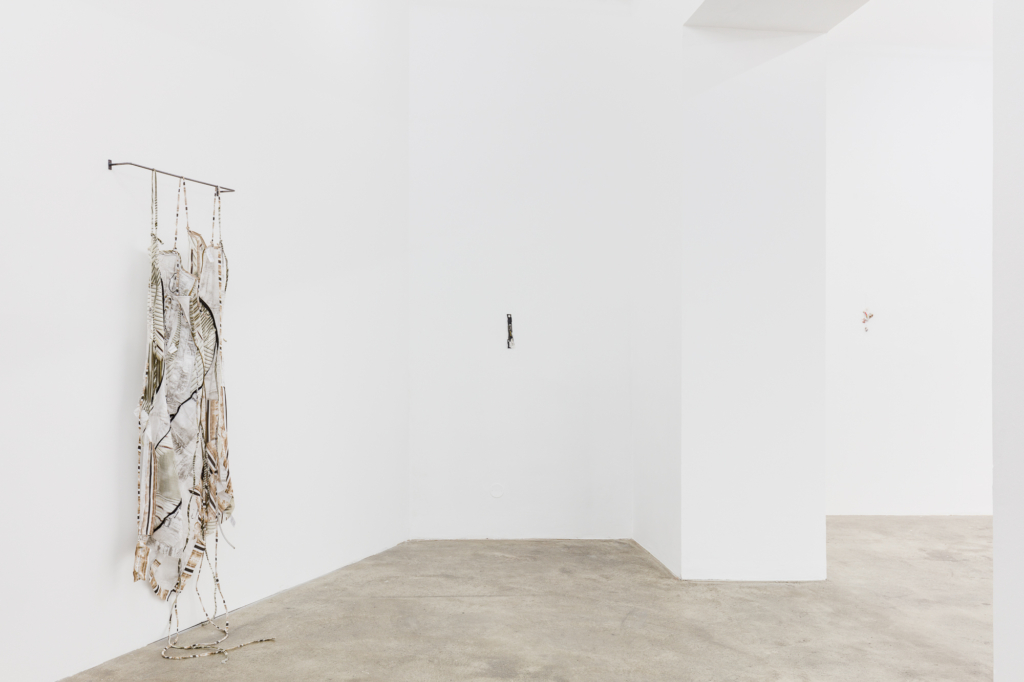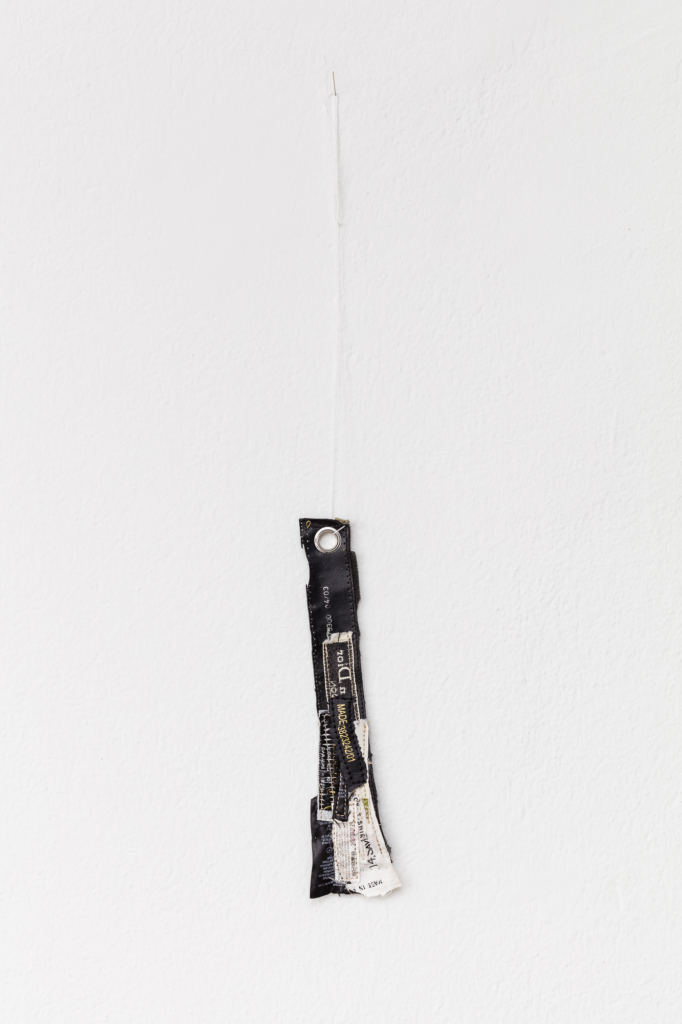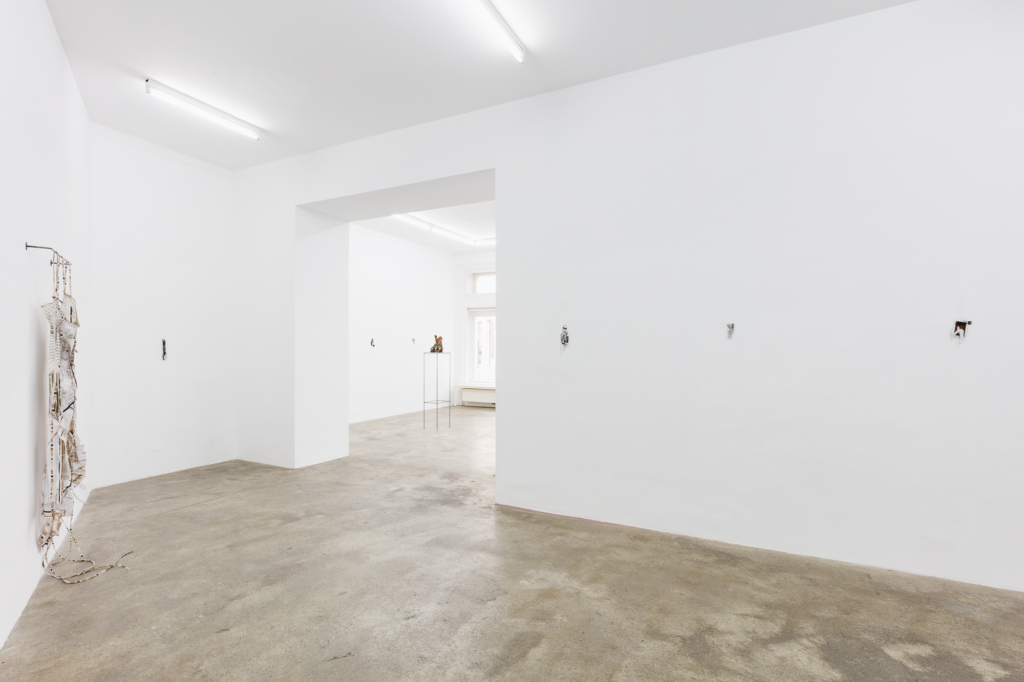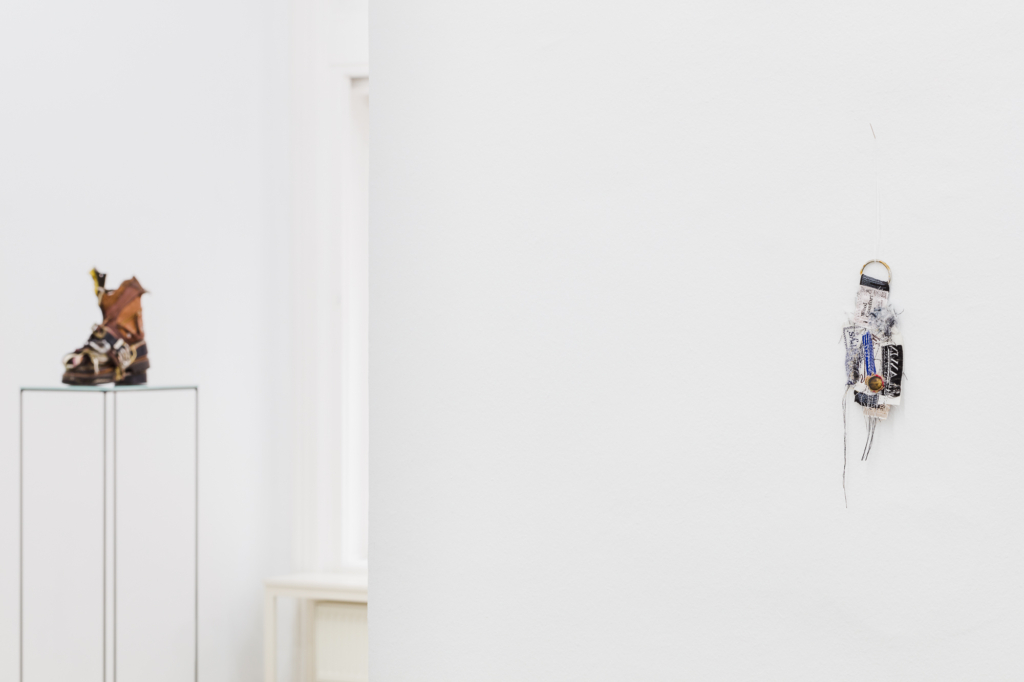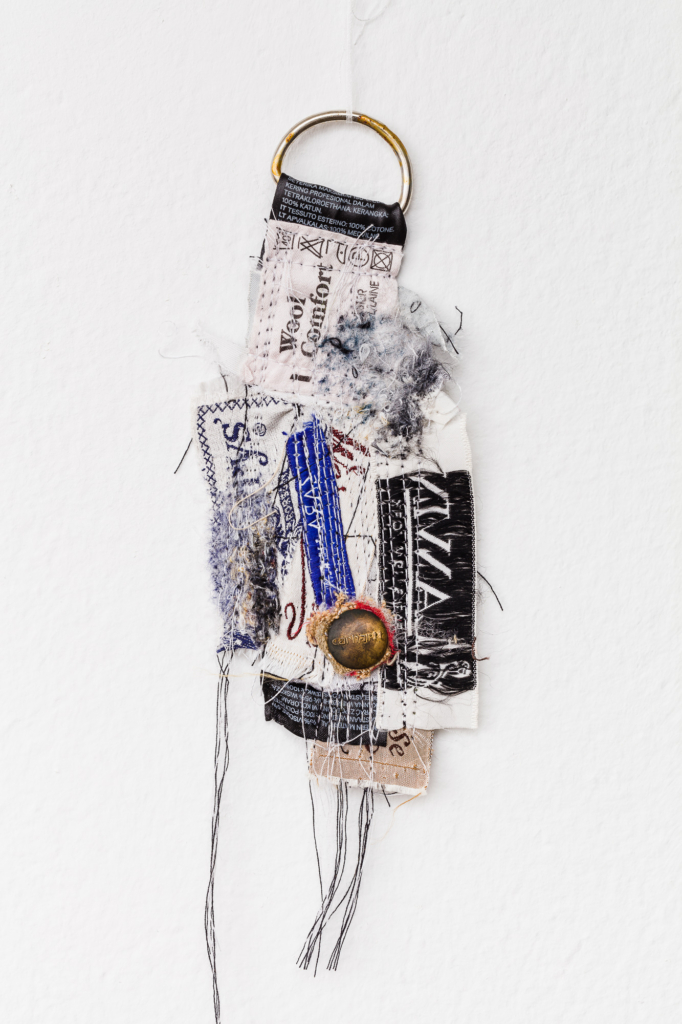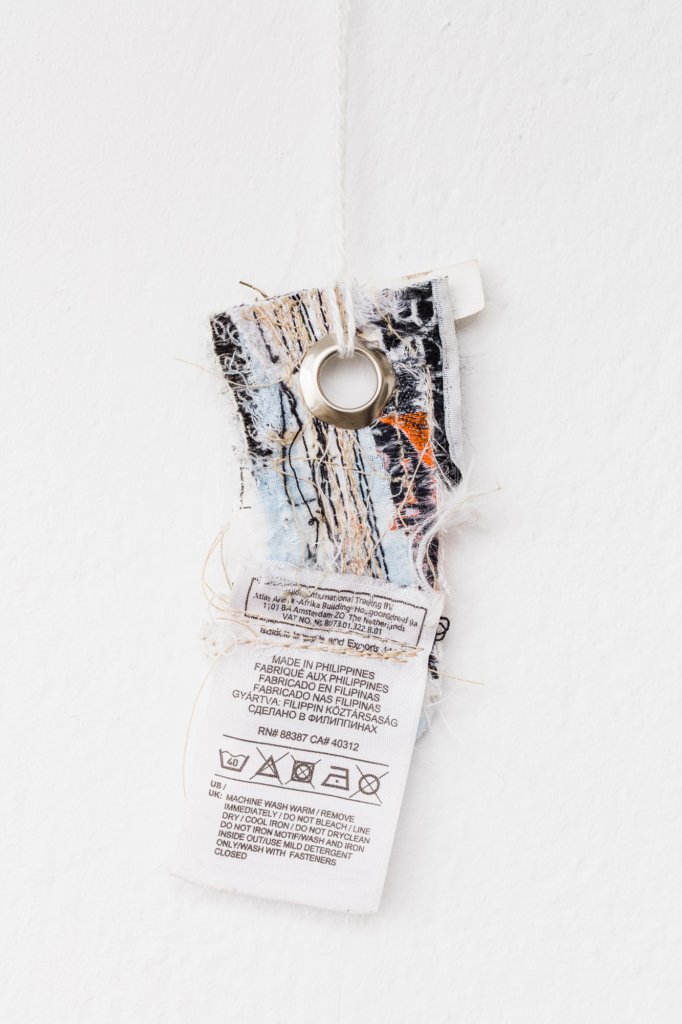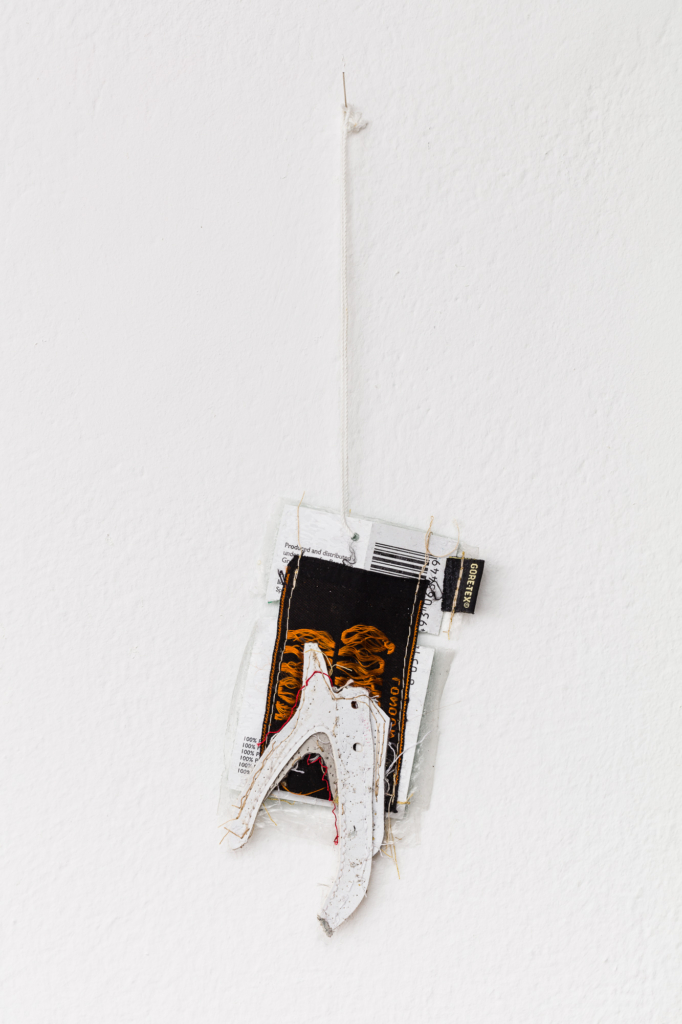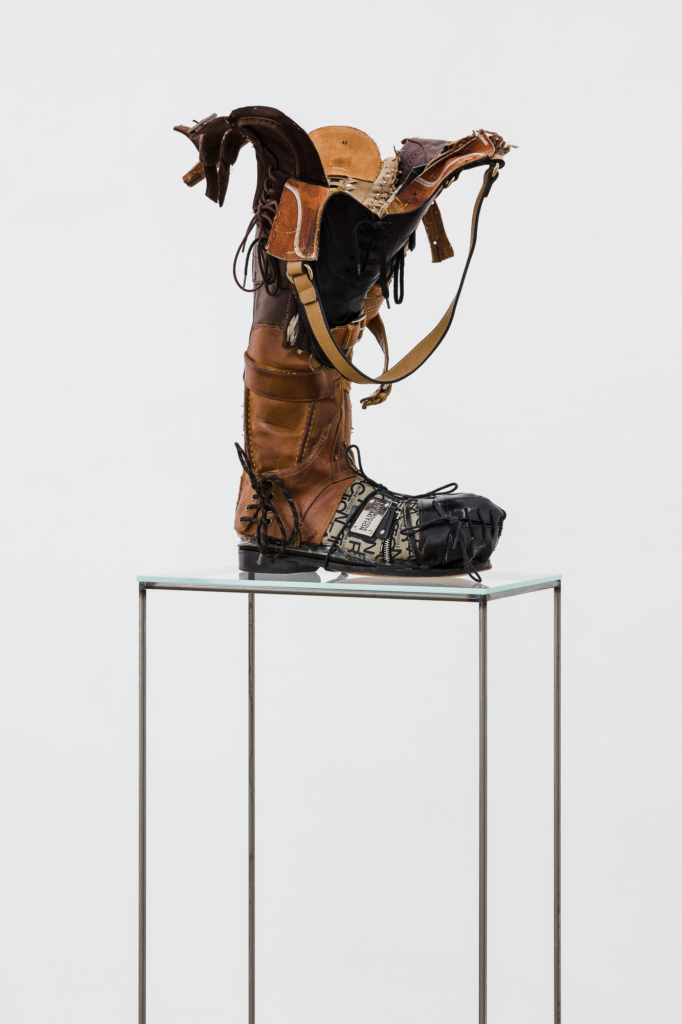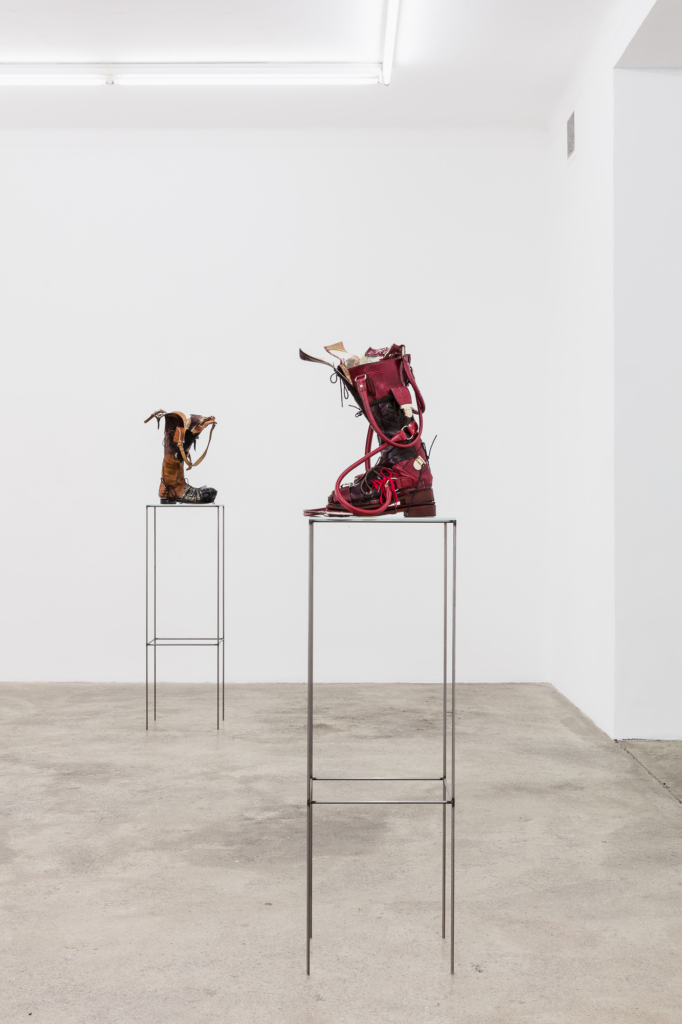Sophie Tappeiner is pleased to announce the opening of Autumn Cloth, a new exhibition by Tenant of Culture. Autumn Cloth marks the first exhibition with the Dutch, UK-based artist in the gallery, and comprises a new series of sculptural as well as wall-based works.
Tenant of Culture presents the material and symbolic excretions of fashion in a fossilized state, suspended between archaeology and commodity. Much like trash, her works—often assembled using discarded and recycled shoes, denim, jackets, belts, sweatpants, socks and hats—tell stories inchoately; there is the outline of a plot, but only in the form of a puzzle, fragments of an impossible history. The materials that the artist repurposes into extravagant and fashionable hybrids are both singular objects and the residue of global consumer society, an unfathomable system of billions of objects that only grows day by day. Standing on the heap of its waste pile, carefully sorting through an infinite archive of bygone sartorial desires through second hand shops and eBay, Tenant of Culture works up against a fundamental impossibility: how do we try to make sense of all the debris—the stuff—of permanent capitalist overdrive? Fashioning herself as a ragpicker or scavenger, the artist upcycles discarded materials to speculate the life histories of commodities even if their supply chain is almost entirely obscured by branding – and propose a new symbolic value in the alternative circuit of art.
The exhibition presents 7 single boot sculptures on a glass and steel pedestal, evoking the language of fashion boutique display. These boots – distinct for their blown-out, aggregate shapes – have been produced following traditional shoe-making technique of stretching and nail-hammering a pattern around a shoe last, only using an erratic patchwork made up entirely of recycled shoes and handbags as its material. By keeping the small nails used for this process exposed, along with foam, fillings, and glue leaking from the lining, Tenant of Culture visualises common manufacturing processes in the industry while materially evoking their mutated nature: hybrid zombie-objects haunted by former product lives. Along the wall, small tags made of labels and textile scraps hang in rows, their materials felted and pressed in plastic, thus blending and obscuring the information printed on them (often intended to indicate brand name and manufacturing origin).
Autumn Cloth takes its name from the English economist Nicholas Barbon, an early theorist of fashion consumption, who in a 1690 essay praised fashion’s ability to “dress a man as if he lived in a perpetual spring – he never sees the autumn of his cloth.” In this evocative metaphor, ‘autumn cloth’ – threadbare cloth that needs replacing – is never reached thanks to the cycle of fashion that replaces clothes long before it is actually necessary. Since the time of Barbon’s writing, this mode of fashion production has only accelerated, particularly with the rise of the global fast fashion industry, where cheap price points and dozens of product drops a year render garments ever more expendable, accelerating their obsolescence.
Working out of her studio in Regent Street – the very heart of the UK’s high street fashion mecca – during the COVID-19 pandemic, Tenant of Culture witnessed the extreme volatility of this frenzied system as abandoned commodities gathered dust in the mirrored window displays facing abandoned streets. Contending with the numerous etymologies of consumption – such as the latin “to use up, eat, waste” – Autumn Cloth reads contemporary fashion production as an ever-devouring system depleting the planet’s resources, and proposes art as a strange archive of this permanent disaster, where materials and object may go to take on new meanings and values in a fossilized state.
Jeppe Ugelvig
PRESS
